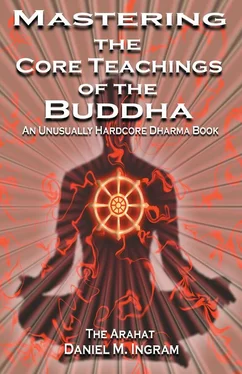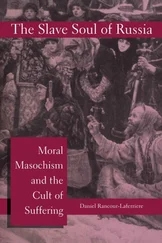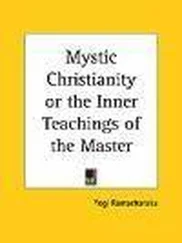Daniel Ingram - Mastering the Core Teachings of Buddha - An Unusually Hardcore Dharma Book
Здесь есть возможность читать онлайн «Daniel Ingram - Mastering the Core Teachings of Buddha - An Unusually Hardcore Dharma Book» весь текст электронной книги совершенно бесплатно (целиком полную версию без сокращений). В некоторых случаях можно слушать аудио, скачать через торрент в формате fb2 и присутствует краткое содержание. Год выпуска: 2009, ISBN: 2009, Издательство: Aeon Books, Жанр: Старинная литература, на русском языке. Описание произведения, (предисловие) а так же отзывы посетителей доступны на портале библиотеки ЛибКат.
- Название:Mastering the Core Teachings of Buddha - An Unusually Hardcore Dharma Book
- Автор:
- Издательство:Aeon Books
- Жанр:
- Год:2009
- ISBN:9781904658405
- Рейтинг книги:5 / 5. Голосов: 1
-
Избранное:Добавить в избранное
- Отзывы:
-
Ваша оценка:
- 100
- 1
- 2
- 3
- 4
- 5
Mastering the Core Teachings of Buddha - An Unusually Hardcore Dharma Book: краткое содержание, описание и аннотация
Предлагаем к чтению аннотацию, описание, краткое содержание или предисловие (зависит от того, что написал сам автор книги «Mastering the Core Teachings of Buddha - An Unusually Hardcore Dharma Book»). Если вы не нашли необходимую информацию о книге — напишите в комментариях, мы постараемся отыскать её.
Mastering the Core Teachings of Buddha - An Unusually Hardcore Dharma Book — читать онлайн бесплатно полную книгу (весь текст) целиком
Ниже представлен текст книги, разбитый по страницам. Система сохранения места последней прочитанной страницы, позволяет с удобством читать онлайн бесплатно книгу «Mastering the Core Teachings of Buddha - An Unusually Hardcore Dharma Book», без необходимости каждый раз заново искать на чём Вы остановились. Поставьте закладку, и сможете в любой момент перейти на страницу, на которой закончили чтение.
Интервал:
Закладка:
Notice that fear has in it the desire to protect us or those about whom we care. Anger wants the world to be happy and work well or for justice to be done. Frustration comes from the caring sensations of anger being thwarted. Desire is rooted in the wish to be happy.
Judgment comes from the wish for things to conform to high standards.
Sadness comes from the sense of how good things could be. I could go on like this for a whole book.
Actively reflecting along these lines, sit with this compassionate wish, acknowledge it, and feel the compassionate aspect of it. Allow the actual sensations that seem to be fundamental to wanting to be directly understood as and where they are. Remember that this same quality of compassion is in all beings, in all their unskillful and confused attempts to find happiness and the end of suffering. Sit for a bit with this reflection as it relates directly to your experience.
Then, examine the mental sensations related to the object that you either wish for (attraction), wish to get away from (aversion), or wish would just be able to be ignored (ignorance). Examine realistically if this will fundamentally help yourself and others and if these changes are within your power to bring about. If so, then plan and act with as much compassion and kindness as possible.
Remember then that all the rest of the suffering of that emotional pattern is created by your mind and its confusion, and vow to channel its force into developing morality, concentration, and wisdom.
Reflection on the fact that the emotions have unskillful components as well as skillful ones can give us a more realistic relationship to our hearts, minds and bodies, and allow us to grow in wisdom and kindness without blindly shutting ourselves down or chaining ourselves to a wall.
From a certain point of view, we are all doing our best all the time, and the problem is just that we do not see clearly enough.
There is a Tibetan teaching from Tantra called “The Five Buddha Families” or “Five Sky Dancers” that does a good job of dealing with the 121
Harnessing the Energy of the “Defilements”
wide world of emotions and their helpful and less than helpful aspects.
There is also a Tibetan teaching called “The Six Realms” that can help as well. Both of these teachings are too rich and deep to do them justice here. If you are interested in these fine teachings, you might check out Journey Without Goal, Cutting Through Spiritual Materialism and Transcending Madness, all by Chogyam Trungpa.
It should be noted that the fundamental rule when applying
emotion-derived effort in practice is to actually put it into practice rather than thoughts about practice, thoughts about some goal that seems far off, thoughts about success or failure, thoughts about one’s strengths or weaknesses, or even thoughts about putting effort into practice. These traps are all too common, blindly waste the vast power inherent in our emotional life, and cause rather than reduce difficulties. Some of us will have to learn the hard way.
I remember some time ago I when I realized that something I
thought that I had understood quite thoroughly was actually only partially understood. I was very much less than happy with this, and decided to put the fullness of this compassionate rage into relentless, focused investigation of the Three Characteristics during whatever periods of time I could find during my day for doing so. It was only two months later that I came to understand what I wished to, and I was grateful for the power of the emotional life and what it can lend to practice. Remember, there is love and wisdom mixed into even our
“worst” emotions. If that is what we have to work with, let’s use it wisely!
Some may then say, “That is not right motivation! You cannot proceed without right motivation!” Well, aside from the fact that this simply isn’t true, such people trap themselves in a Catch 22. To attain this “very pure” motivation, to use dangerous language, one must understand what it is that one wants to use this “pure motivation” to understand. Thus, were we unable to proceed based upon our
somewhat deluded motivations, awakening would be impossible by definition.
Luckily, awakening is possible, and the only tool we have is practice based upon semi-deluded motivations. I am extremely grateful that this seems to be sufficient if we are willing to use what we have rather than fantasizing about some perfect us that doesn’t exist. Without greed, 122
Harnessing the Energy of the “Defilements”
rage, grandiosity, frustration, insecurity, fear and a host of other semi-deluded forces, we would hardly budge. We wouldn’t pick up dharma books, we wouldn’t go on retreats, we wouldn’t deal with our stuff, and we wouldn’t care at all. But we do care, and so we forge on. Thank the Metaphorical God for the power of our emotions and the pain the dark ones cause. They are the gasoline that drives us on the road to understanding.
123
18.RIGHT THOUGHT AND THE AEGEAN STABLES
There is a lot of emphasis on “right thought” and suppressing the mental “defilements” in Buddhism, as well as training in morality, “right speech” and that sort of thing. As these are agendas for what happens in our ordinary reality, they are aspects of training in morality. This emphasis on controlling our thoughts can be helpful but it has it limits and often causes problems when misunderstood. When this becomes the predominant thrust of one’s practice and involves images of self-perfection that deny the basic realities of human existence and the inevitable dark sides of life, trouble is basically guaranteed.
The Buddha did go on and on about restraining thought,
transforming thought, and that sort of thing. He was making a very important point, but he didn’t stop there. He also advocated that people go on to cultivate concentration and then insight, so as to temporarily quiet and then overcome forever the fundamental delusions that drive our noisy minds. This same point would apply to psychotherapy: it can be useful, but to find the end of suffering we must go much deeper.
Sutra #20 in The Middle Length Discourses of the Buddha (great book, by the way) is called “The Removal of Distracting Thoughts.” In it, Buddha admonished his followers to deal with unskillful, evil, unwholesome or useless thoughts in the following ways. First, if the student is paying attention to something that is causing these unskillful thoughts, then they should pay attention to something wholesome that does not produce unskillful thoughts. If this fails, then they should reflect on the danger in those thoughts and thus try to condition themselves to not think such thoughts in this way. If this fails, then they should try to forget those thoughts and not give any attention to them. If this fails, then they should give attention to quieting the mind and to stilling these thoughts. If this fails, then the student should bear down with their full will and “crush mind with mind,” forcing the thoughts to stop with unremitting and unrestrained effort. He also recommended the formal concentration practices of loving-kindness, compassion, sympathetic joy, and equanimity (see Lovingkindness, The
Revolutionary Art of Happiness, by Sharon Salzberg, or Training the Mind, by Chogyam Trungpa).
Right Thought and the Aegean Stables
Those familiar with cognitive restructuring will notice great similarities between this 2,500-year-old approach and more modern techniques. These can help develop morality and also suppress the hindrances that cause distraction and poor concentration, as well as begin to create better mental and personal habits. However, this can have its problems if not understood in a realistic and clear way.
A subtle but incorrect modification of these techniques can create a large amount of internal conflict, as can failing to understand the limitations of such techniques. The subtle modification that is definitely not recommended but all too common is the following: the student substitutes feelings of self-judgment or self-loathing for the thoughts they feel are unskillful. This results from only seeing the ignorance side and not the compassion side of intentions and thoughts. It can produce some extremely detrimental results, as well as highly neurotic and repressed individuals who are in basic denial of their actual humanity and heart. It can produce students who are quite bitter, tight, judgmental, Puritanical, and generally unpleasant to be around. This is one extreme.
Читать дальшеИнтервал:
Закладка:
Похожие книги на «Mastering the Core Teachings of Buddha - An Unusually Hardcore Dharma Book»
Представляем Вашему вниманию похожие книги на «Mastering the Core Teachings of Buddha - An Unusually Hardcore Dharma Book» списком для выбора. Мы отобрали схожую по названию и смыслу литературу в надежде предоставить читателям больше вариантов отыскать новые, интересные, ещё непрочитанные произведения.
Обсуждение, отзывы о книге «Mastering the Core Teachings of Buddha - An Unusually Hardcore Dharma Book» и просто собственные мнения читателей. Оставьте ваши комментарии, напишите, что Вы думаете о произведении, его смысле или главных героях. Укажите что конкретно понравилось, а что нет, и почему Вы так считаете.












